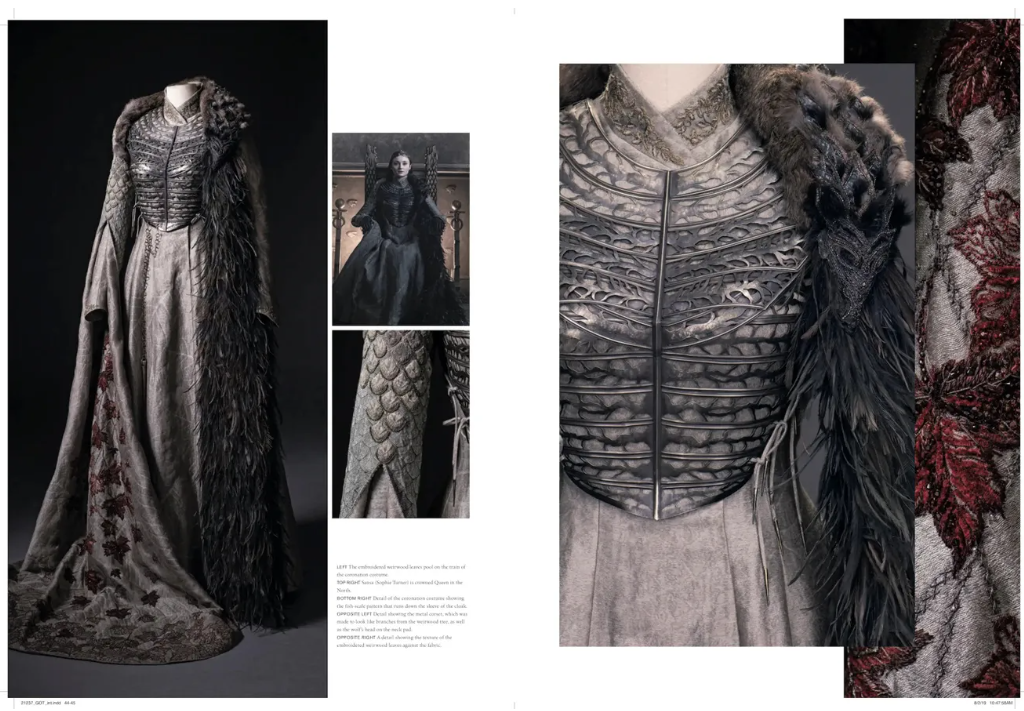
Extract from Clapton's book
Game of Thrones: The Costumes
Lead costume designer for Game of Thrones, Michele Clapton subtly used costumes throughout the show that were loaded with symbolism. Indeed, that is not something that would be picked up on at first glance but once you dissect the costumes within their context you would be able to see the significance of the costumes. This is true for many of the characters in the show but particularly for Sansa Stark.
Indeed, the show opens on a Sansa Stark that is naive and innocent, visualised by dressing her in pastel colours with subtle accents of flowers (Hosein, 2020). Some of the earlier dresses worn by Sansa also featured birds which represented Sansa being caged and repressed at the hands of the Lannisters (Renfro, 2019). Yet we see a complete turn around in season four, with Sansa being dressed in all black, with a tight, leather bodice. This showed a new assertive Sansa and foreshadowed her role as Lady of Winterfell in later seasons.

Moreover, her accessories also signalled what ‘era’ of Sansa we were seeing. In the early seasons of the show Sansa Stark is seen wearing a simple silver necklace with a dragonfly which symbolised her fragile nature (Hosein, 2020). Alongside her new assertive self, we see the accessories change as well. She goes from wearing a symbol that shows her naiveté and weakness to a necklace that showed new developments in the character and foreshadowed a powerful side still to come (Hosein, 2020).
Whilst every outfit that we see Sansa Stark wear throughout the show has some sort of symbolism, as asserted by lead costume designer Michele Clapton, the final outfit that we see Sansa wear after 8 seasons, is perhaps the one loaded with the most symbolism. This was done on purpose as costumes are able to tell parts of the story that actors can’t (Clapton, 2019, cited in Renfro, 2019).